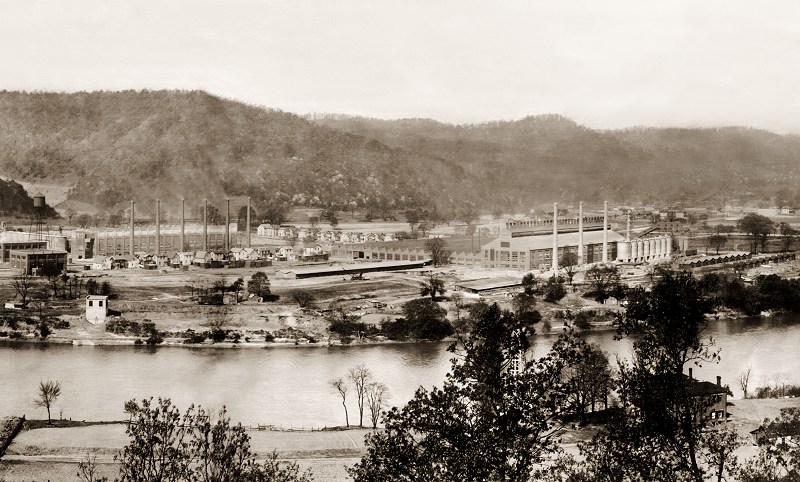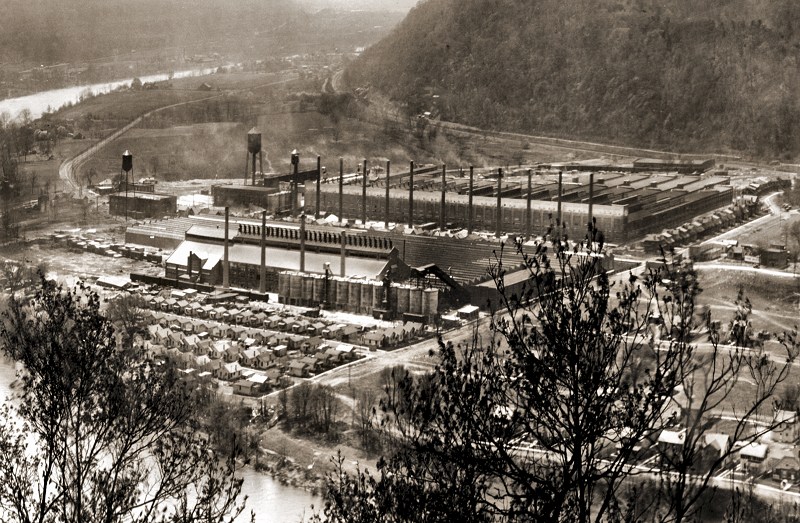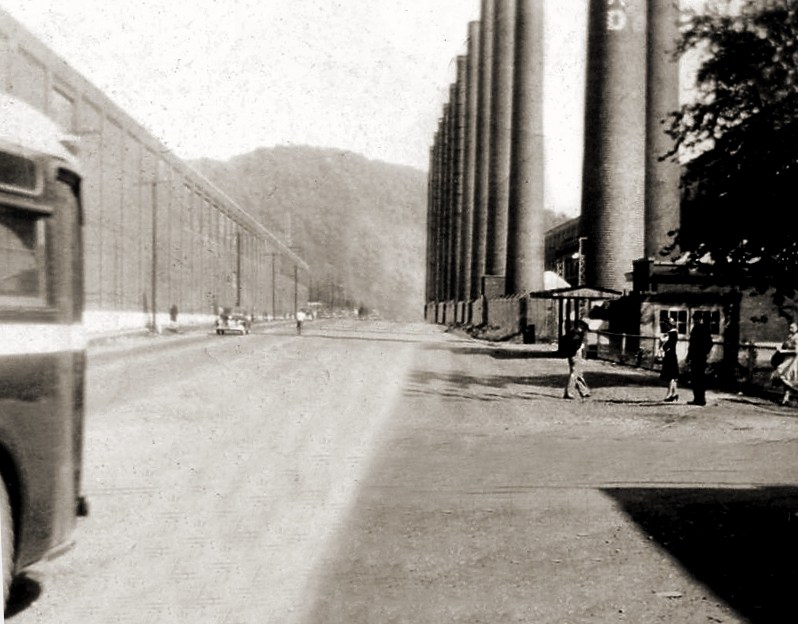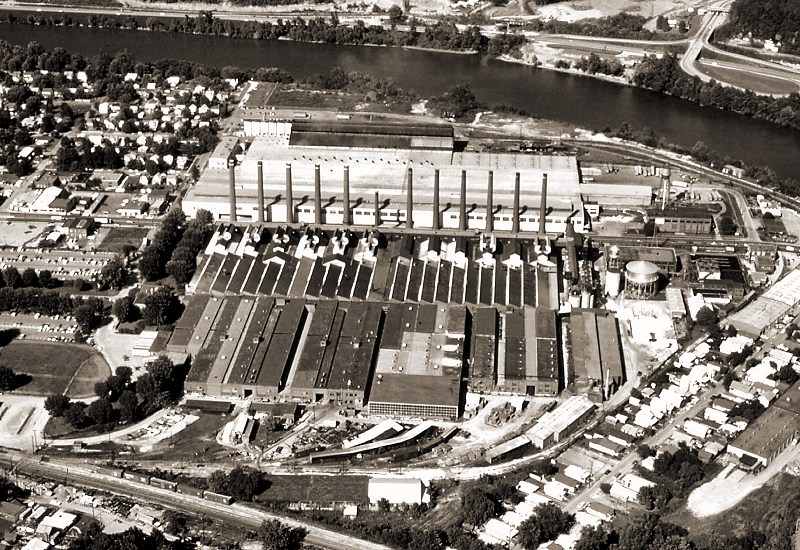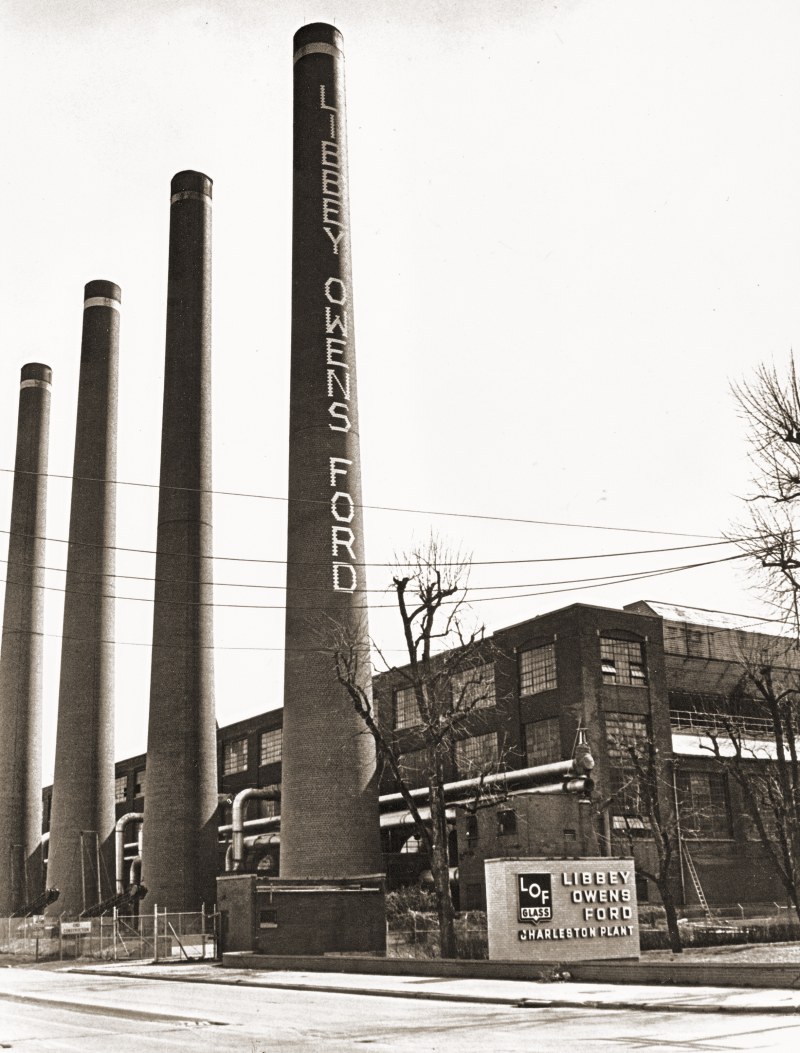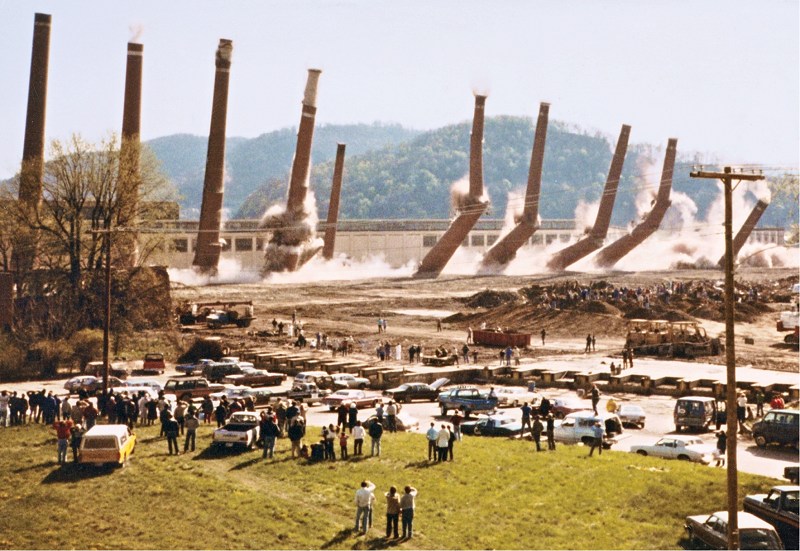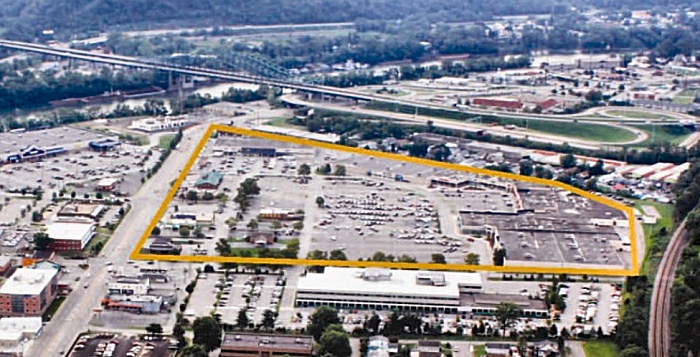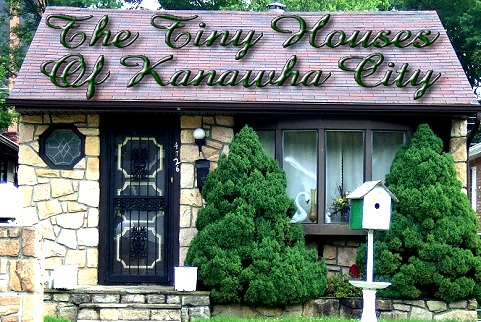|
LIBBEY OWENS FORD
 View from MacCorkle Ave. 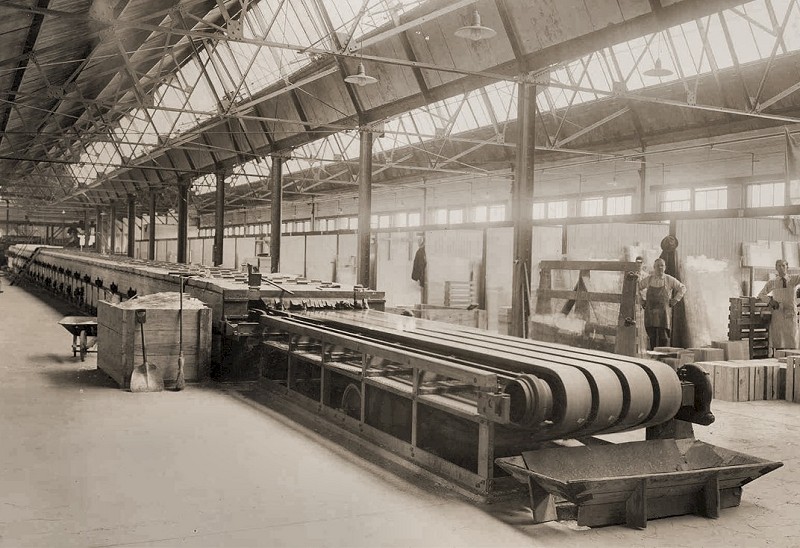 Inside part of the plant Libbey-Owens,
before being joined by Ford, was the world’s largest producer of window
glass. In 1930, they supplied glass used in the construction of the
Empire State Building. The Waldorf Astoria also used their glass.
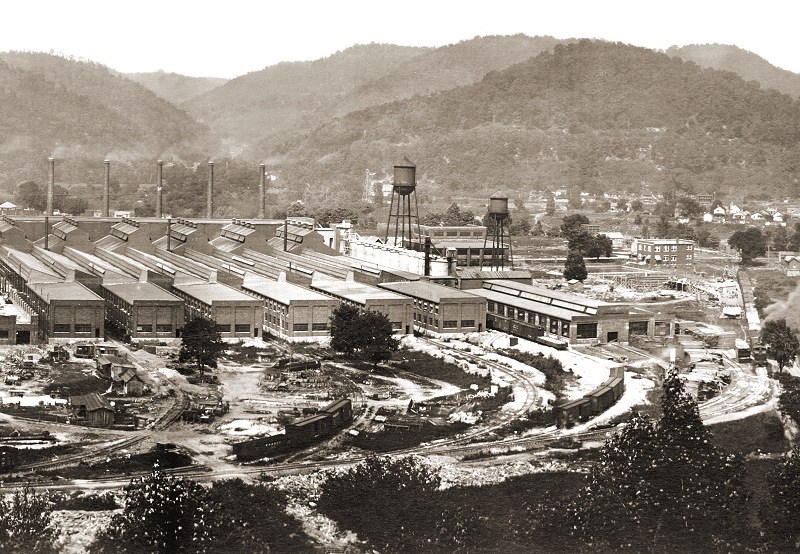 View looking North
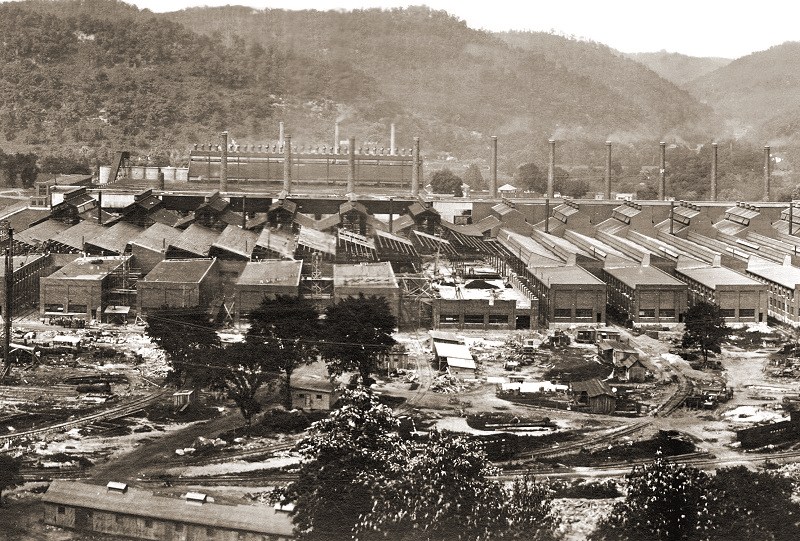 Another view looking North
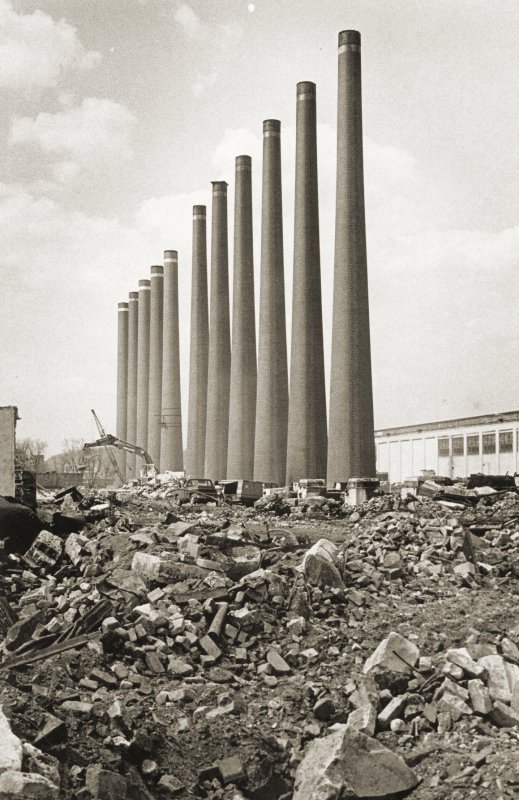 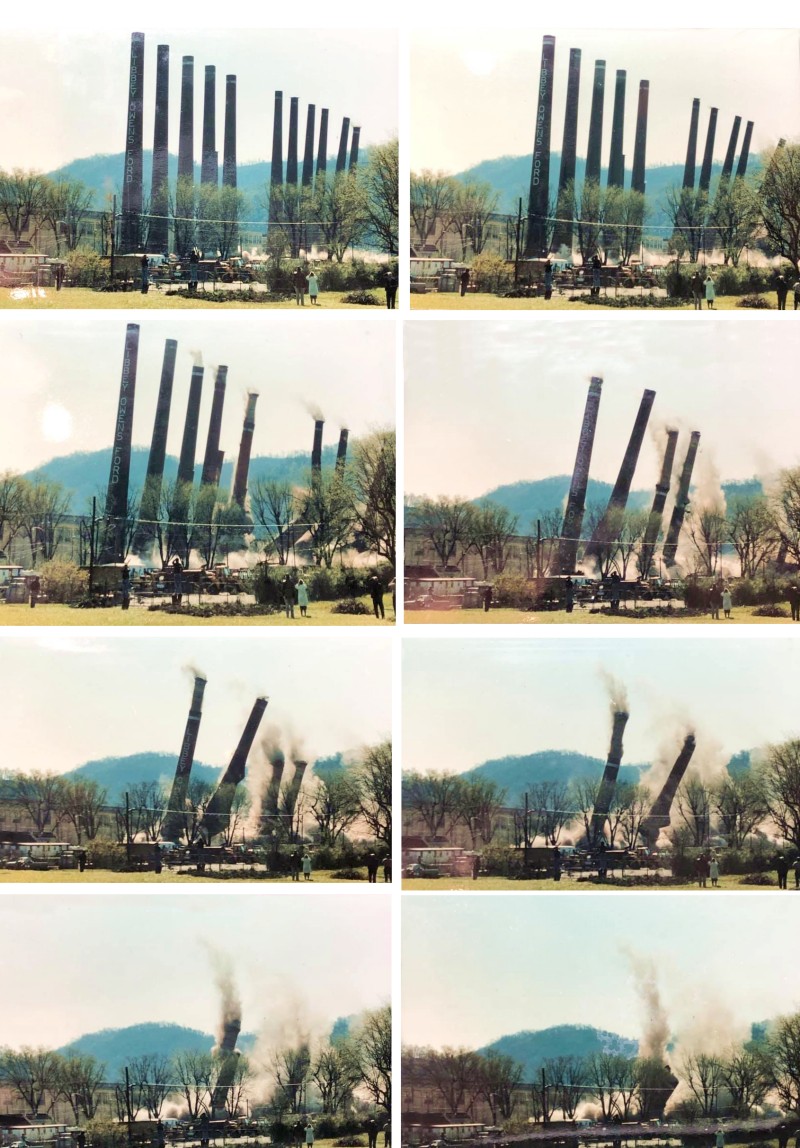 Photos By Steve Simpson 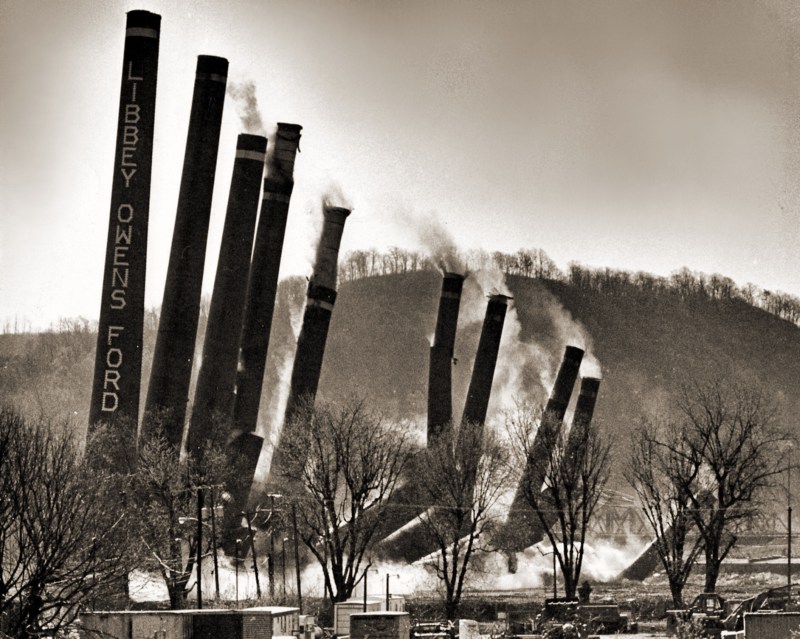 1980 - End of an era
multinational glass manufacturer headquartered in the United Kingdom.
The property today is a shopping mall.
The
surrounding neighborhoods burgeoned as employees moved to live near
their jobs. Kanawha City still boasts tiny houses that were built for
glass plant workers. Nearly too small to even be considered
bungalows, these homes were anywhere from 450 to 750 square foot
structures. Although tiny, they provided adequate housing for scores of
Libbey-Owens-Ford families. Situated on lots a mere twenty feet wide,
the tiny house footprint was only about 15 by 30 feet. SEE MORE
HERE: http://www.mywvhome.com/more/tiny.htm
Many people in the valley still have chunks of glass from the plant that they place as decorations. |

